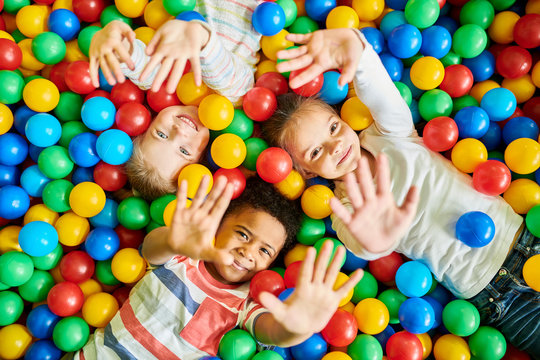Children’s Ball Pool: The Ultimate Guide to Fun, Learning, and Safety

A children’s ball pool—also called a ball pit—is a vibrant enclosure filled with colorful plastic balls designed for kids to jump, play, and explore. Popular in play centers, homes, daycares, and even therapy rooms, ball pools provide not just excitement but also developmental benefits for growing children. Originally introduced in the 1970s, ball pits have evolved into sensory-rich play zones that can be tailored for various age groups, space sizes, and needs.
As both a gaming and developmental tool, children’s ball pools merge playtime with skill-building. This makes them not just a toy, but a purposeful learning environment ideal for children from infancy to early school age.
Benefits of Ball Pools for Children
Ball pools offer more than just fun—they deliver a host of cognitive, emotional, and physical benefits that support holistic development:
Sensory Development
The tactile experience of moving through hundreds of plastic balls stimulates touch, balance, and proprioception. This sensory input is particularly valuable for children with developmental delays or sensory processing disorders.
Gross Motor Skills
Jumping, crawling, and rolling in a ball pool helps children strengthen large muscle groups. These movements support motor coordination, muscle tone, and physical confidence.
Social Interaction
In a shared ball pool, children learn to communicate, take turns, and resolve minor conflicts, enhancing social-emotional skills. It fosters cooperation and imaginative play, especially in group settings like playdates or parties.
Safe Risk-Taking
Ball pits offer a cushioned, enclosed space where children can take physical risks—like jumping or diving—without serious danger. This promotes self-discovery and builds self-esteem.
Stress Relief
Like any form of play, ball pool sessions reduce cortisol levels (the stress hormone) and trigger the release of endorphins. It creates a joyful escape where children can relax and express themselves freely.
Types of Ball Pools Available
From compact home versions to expansive commercial installations, ball pools come in various styles to suit different environments and budgets:
Home Ball Pools
Typically made from soft foam with collapsible walls and a few hundred balls, these are ideal for toddlers and can easily fit in a living room or nursery.
Commercial Ball Pits
Found in malls, fast-food play zones, and amusement parks, these are large-scale pits holding thousands of balls, often combined with slides, tunnels, and interactive lighting for immersive play.
Sensory Ball Pools
Designed for therapeutic or educational use, these may include textured balls, sound elements, or LED lights. Ideal for children with special needs, they help regulate sensory input and improve focus.
Inflatable Ball Pools
Great for outdoor use or travel, inflatable ball pits are portable, easy to set up, and budget-friendly. While not as durable as foam-based versions, they’re perfect for temporary play sessions.
DIY Ball Pools
For crafty parents or educators, building a DIY ball pit using foldable baby fences and a bulk purchase of balls can be a cost-effective and customizable solution.
Safety Considerations and Guidelines
While ball pits are fun and beneficial, ensuring a child’s safety is paramount. Proper supervision, maintenance, and design all play a role in reducing potential risks.
Age Appropriateness
Always check the manufacturer’s age recommendations. Some ball pits contain smaller balls that may pose a choking hazard to children under 3 years old.
Cleanliness
Ball pools can harbor bacteria, dust, and allergens. Home ball pits should be cleaned weekly, while commercial pits should follow a strict sanitation schedule—ideally with ball-washing machines or UV sanitizers.
Depth and Ball Quality
Ensure the depth of the pool allows free movement without the risk of suffocation or entrapment. Use balls made from non-toxic, BPA-free plastic with anti-crush properties.
Supervision
Never leave children unattended in a ball pool. Accidental falls, rough play, or hidden toys could cause injury if an adult is not nearby.
Enclosure and Padding
Check for soft padding on the floor and walls to absorb impacts. For elevated ball pools, ensure railings or nets are securely in place to prevent falls.
Choosing the Right Ball Pool for Your Child
When selecting a ball pool, consider several factors tailored to your child’s age, space, and developmental goals:
Size and Portability
For small apartments, a foldable or inflatable model is ideal. Larger spaces may accommodate permanent foam or modular designs.. Material Durability
Foam pools with fabric covers are gentle but prone to wear. Look for reinforced stitching and high-quality balls that won’t deform over time.
Purpose of Use
If it’s for casual home play, a basic setup will suffice. For therapy or learning, invest in a sensory-focused ball pit with integrated features.
Brand Reputation
Opt for trusted brands that meet international toy erime safety standards (like ASTM or CE certification). Read reviews and check return policies before purchase.
Budget
A decent starter home ball pool costs around $30–$80. Premium options with accessories or thousands of balls can exceed $200. Prioritize safety and functionality over aesthetics if on a budget.
Maintenance and Hygiene Tips
Keeping a children’s ball pool clean is essential for long-term usability and child health. Here’s how to manage hygiene effectively:
Ball Cleaning
Place balls in mesh laundry bags and wash them in a tub with warm soapy water or a disinfectant solution. Rinse and air dry thoroughly before returning them to the pool.
Surface Sanitizing
Wipe down the base, walls, and surrounding area regularly using child-safe cleaning products. Avoid bleach and harsh chemicals that could cause skin irritation.3. Weekly Schedule
Set a routine—clean balls every 2–3 weeks and the surrounding structure weekly. For public settings, daily cleaning is recommended.
No Food or Drink
Prevent mold and bacteria growth by enforcing a “no snacks in the ball pool” rule. Encourage kids to wash hands before entering.
Toy Rotation
Limit the number of foreign objects (like action figures or sharp toys) in the ball pit to reduce clutter and accidental injuries.
Educational and Developmental Uses
Beyond fun, ball pools are increasingly used in educational and therapeutic contexts:1. Occupational Therapy
Therapists use ball pools for vestibular training, calming exercises, and to help children with autism or ADHD regulate sensory input.
Early Learning
Incorporate lettered or numbered balls to teach alphabets, colors, and counting. Gamify learning by asking kids to find specific colors or shapes.
Group Activities
Use ball pools for structured activities like treasure hunts, memory games, or storytelling sessions that blend learning with physical movement.
Emotional Support
The soft and enclosed space of a ball pool can offer comfort to anxious children. It serves as a soothing corner in classrooms or therapy centers.
Conclusion
A children’s ball pool is more than a play feature—it’s a rich, interactive environment that fosters motor skills, sensory growth, and emotional development. Whether installed at home or in a public play area, it offers a safe and engaging outlet for energy, creativity, and learning. With thoughtful selection and proper maintenance, a ball pool can become a beloved and beneficial part of your child’s daily routine.


